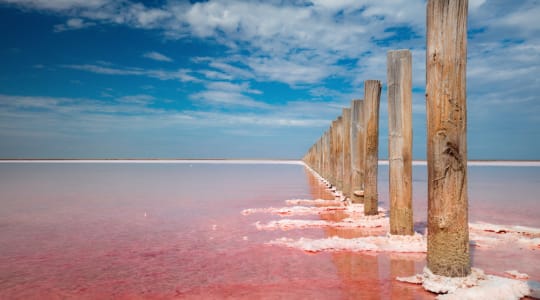Syvash, also known as Sivash, is a large system of shallow lagoons and mudflats located in the Azov-Kuban lowland in southern Ukraine, between the Crimean Peninsula and the mainland. It covers an area of around 2,560 square kilometers and is separated from the Sea of Azov by a narrow strip of sand and mud.
The water in Syvash is saline and varies in color from blue to pink depending on the season and the amount of algae in the water. It is an important ecological and economic resource, supporting various species of fish, birds, and vegetation. The lagoons are also used for salt production and the extraction of minerals such as gypsum and mirabilite.
Syvash is a popular destination for birdwatchers and nature lovers, as it is home to over 260 species of birds, including flamingos, pelicans, herons, and spoonbills. The area around Syvash is also rich in history, with archaeological evidence suggesting that it has been inhabited since ancient times. The area was used as a trade route between the Black Sea and the Mediterranean, and was a part of the Crimean Khanate before being annexed by the Russian Empire in the 18th century.
Today, Syvash is a protected natural area and is designated as a Ramsar site, meaning it is recognized as a wetland of international importance. It is a unique ecosystem and an important source of livelihood for local communities, as well as a popular tourist destination.
Explore Near Syvash
Discover 1 attraction within 75km. Perfect for planning day trips, finding connecting flights, or discovering new destinations to explore during your visit.
Nearby Attractions & Places to Visit
1 destination within 53.8km from your location

Cross-Border Adventures Near Syvash
Discover cross-border adventures near Syvash. Explore neighboring countries with similar attractions and extend your travel experience across borders.








